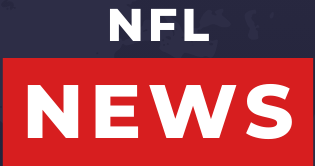Building a Top-Notch Fitness App for Streamlined Online Workouts

In today’s fast-paced world, time is of the essence and convenience is key. Fitness enthusiasts are increasingly turning to online workouts due to the rise of digitalization, leading to a surge in demand for top-notch fitness apps. These apps offer users the flexibility to exercise anytime, anywhere, without the constraints of a physical gym. However, building a successful fitness app requires more than just coding skills. It demands a deep understanding of user needs, cutting-edge technology, and a user-centric approach.
Introduction to Fitness Apps
Fitness apps have transformed the landscape of personal health and wellness, offering a wealth of features to users aiming to improve their fitness levels. From monitoring daily activity to providing customized workout routines, these apps have become indispensable tools for individuals seeking to lead healthier lifestyles. Moreover, the development of fitness apps has continuously evolved, incorporating cutting-edge technologies such as artificial intelligence and augmented reality to enhance user experiences and outcomes. As the demand for such apps continues to grow, developers are constantly innovating to deliver more comprehensive solutions that address the diverse needs of users worldwide. Whether it’s through gamification, social integration, or personalized coaching, best fitness app development remains a dynamic and exciting field driving positive change in the health and fitness industry.
Importance of a Top-Notch Fitness App
A top-notch fitness app goes beyond just providing exercise routines; it serves as a comprehensive fitness companion, empowering users to achieve their goals efficiently and effectively. By offering personalized workout plans, real-time feedback, and seamless integration with wearable devices, such apps elevate the user experience to new heights. Moreover, in today’s digital era, where health and fitness are paramount, a well-designed fitness app can significantly impact users’ lives by promoting a healthier lifestyle.
Understanding User Needs
To develop a top-notch fitness app, it’s crucial to understand the diverse needs and preferences of users. Customization and personalization are key factors that drive user engagement and retention. Users appreciate apps that adapt to their fitness level, goals, and preferences, offering tailored recommendations and insights.
Customization and Personalization
A successful fitness app allows users to personalize their experience by setting goals, selecting preferred workout types, and adjusting intensity levels. By leveraging user data and feedback, developers can fine-tune the app to meet individual needs, fostering a sense of ownership and commitment among users.
Ease of Use
In the competitive landscape of fitness apps, simplicity is paramount. Users expect an intuitive interface that is easy to navigate and understand. Complex menus, cluttered screens, and confusing navigation can deter users from engaging with the app. Therefore, prioritizing simplicity and clarity in design is essential for enhancing the user experience.
Comprehensive Features
A top-notch fitness app offers a wide range of features that cater to various aspects of health and wellness. From workout routines and progress tracking to nutrition guidance and social interaction, the app should encompass all essential elements of a holistic fitness journey. By providing comprehensive features, the app becomes a one-stop destination for users seeking to improve their overall well-being.
Designing the User Interface (UI)
The user interface plays a pivotal role in shaping the overall user experience of a fitness app. A well-designed UI should strike a balance between functionality and aesthetics, ensuring seamless navigation and visual appeal.
Simplicity and Clarity
The UI design should prioritize simplicity and clarity, minimizing distractions and unnecessary elements. Clean layouts, clear typography, and intuitive icons contribute to a user-friendly interface that facilitates easy interaction.
Interactive Elements
Interactive elements such as buttons, sliders, and animations enhance user engagement and interactivity. Incorporating interactive features into the UI makes the app more enjoyable to use but also encourages users to stay motivated and committed to their fitness goals.
Visual Appeal
Visual aesthetics play a crucial role in attracting and retaining users. A visually appealing UI with high-quality graphics, vibrant colors, and visually appealing imagery creates a positive first impression and instills confidence in the app’s credibility. Moreover, visual elements such as progress charts, achievement badges, and motivational quotes can inspire users to stay on track and celebrate their accomplishments.
Developing Essential Features
The success of a fitness app hinges on its ability to deliver essential features that address the needs and preferences of users. From workout plans and progress tracking to nutrition guidance and social features, each feature plays a vital role in enhancing the overall user experience.
Workout Plans
Central to any fitness app are the workout plans, which provide users with structured exercise routines tailored to their goals and fitness level. Whether it’s strength training, cardio, yoga, or HIIT, the app should offer a diverse range of workouts to cater to different preferences and interests.
Progress Tracking
Progress tracking is a fundamental aspect of any fitness journey, allowing users to monitor their performance, set goals, and track their progress over time. A top-notch fitness app should offer robust tracking features, including metrics such as steps taken, calories burned, distance traveled, and workout duration. Additionally, incorporating visual charts, graphs, and progress reports can help users visualize their achievements and stay motivated.
Nutrition Guidance
In addition to exercise, nutrition plays a crucial role in achieving fitness goals. A comprehensive fitness app should provide users with nutrition guidance and meal-planning tools to support their dietary needs. From calorie tracking and macronutrient breakdowns to recipe suggestions and meal logging, the app should offer valuable insights and recommendations to help users make informed choices about their diet.
Integration of Wearable Devices
With the proliferation of wearable devices such as fitness trackers, smartwatches, and heart rate monitors, integrating these devices into the fitness app ecosystem has become essential. By syncing with wearable devices, the app can access real-time biometric data, such as heart rate, sleep patterns, and activity levels, to provide users with personalized insights and recommendations. Moreover, leveraging wearable technology enhances the accuracy and effectiveness of the app’s tracking and monitoring capabilities, empowering users to make data-driven decisions about their health and fitness.
Incorporating Social Features
Fitness is often more enjoyable and motivating when shared with others. Therefore, incorporating social features into the fitness app can enhance user engagement and foster a sense of community among users. From social sharing and leaderboards to group challenges and virtual workouts, the app should provide opportunities for users to connect with like-minded individuals, share their progress, and support each other on their fitness journey.
Utilizing AI and Machine Learning
Artificial intelligence (AI) and machine learning (ML) have revolutionized the fitness industry by enabling personalized experiences and predictive analytics. By analyzing user data, behavior patterns, and preferences, AI-powered algorithms can deliver tailored recommendations, adaptive workout plans, and intelligent coaching insights. Moreover, ML algorithms can identify trends and correlations in user data, allowing the app to continuously refine its recommendations and predictions over time.
Ensuring Data Security and Privacy
In an era of increasing data privacy concerns, ensuring the security and privacy of user data is paramount. Fitness apps often collect sensitive information such as health metrics, biometric data, and location tracking, making data security a top priority. Implementing robust encryption protocols, secure authentication mechanisms, and strict access controls can help mitigate the risk of data breaches and unauthorized access. Additionally, transparent privacy policies and user consent mechanisms build trust and confidence among users, reassuring them that their personal information is safe and protected.
Testing and Quality Assurance
Before launching a fitness app to the market, thorough testing and quality assurance are essential to ensure a seamless user experience and minimize bugs and glitches. Conducting rigorous testing across various devices, platforms, and user scenarios helps identify potential issues and usability concerns early in the development process. Moreover, soliciting feedback from beta testers and incorporating user input into the final product iteration improves overall usability and user satisfaction.
Launching and Marketing Strategy
A successful app launch requires a well-defined marketing strategy that generates buzz, attracts users, and drives app downloads. Leveraging social media, influencer partnerships, app store optimization, and targeted advertising can help reach the app’s target audience and generate interest. Moreover, offering promotional deals, free trials, and referral programs incentivizes users to download and try the app, driving user acquisition and retention.
User Feedback and Iterative Improvements
Continuous feedback from users is invaluable for identifying areas of improvement and addressing user needs and preferences. Implementing feedback mechanisms such as in-app surveys, ratings, and reviews enables users to voice their opinions and suggestions directly to the development team. By listening to user feedback and prioritizing feature requests and bug fixes, the app can evolve iteratively, staying relevant and competitive in the ever-changing fitness landscape.
Staying Updated with Trends
The fitness industry is constantly evolving, with new trends, technologies, and consumer preferences emerging regularly. Staying abreast of industry trends and market developments is crucial for keeping the app competitive and meeting evolving user needs. By monitoring competitor activities, attending industry conferences, and conducting market research, developers can identify opportunities for innovation and differentiation, ensuring that the app remains at the forefront of the fitness market.
Challenges and Solutions in Fitness App Development
Developing a top-notch fitness app comes with its fair share of challenges, from technical complexities and design considerations to market competition and user expectations. However, by adopting a user-centric approach, leveraging cutting-edge technology, and staying agile and adaptable, developers can overcome these challenges and create a truly exceptional fitness app that resonates with users and makes a positive impact on their lives.
Conclusion
In conclusion, building a top-notch fitness app for streamlined online workouts requires a combination of technical expertise, user-centric design, and innovative thinking. By understanding user needs, prioritizing simplicity and clarity in design, and leveraging advanced technologies such as AI and machine learning, developers can create a truly exceptional fitness app that empowers users to achieve their health and wellness goals effectively and efficiently.




